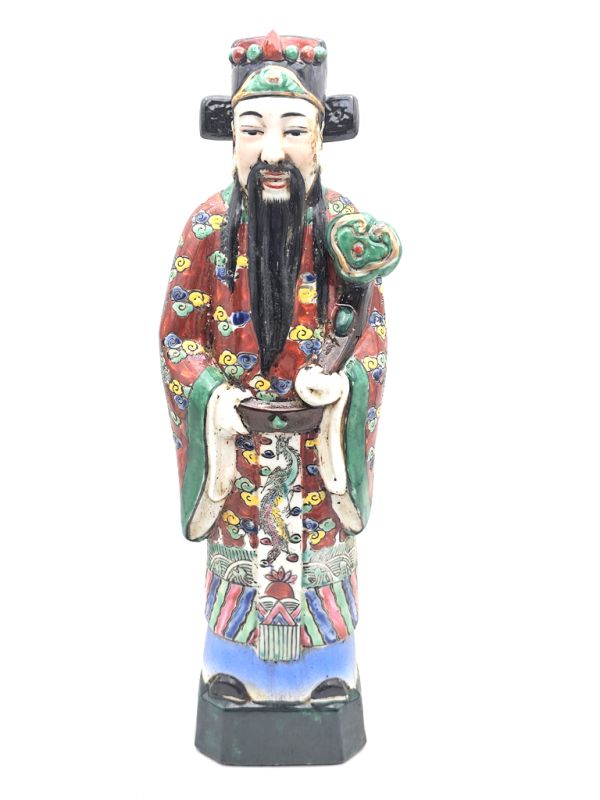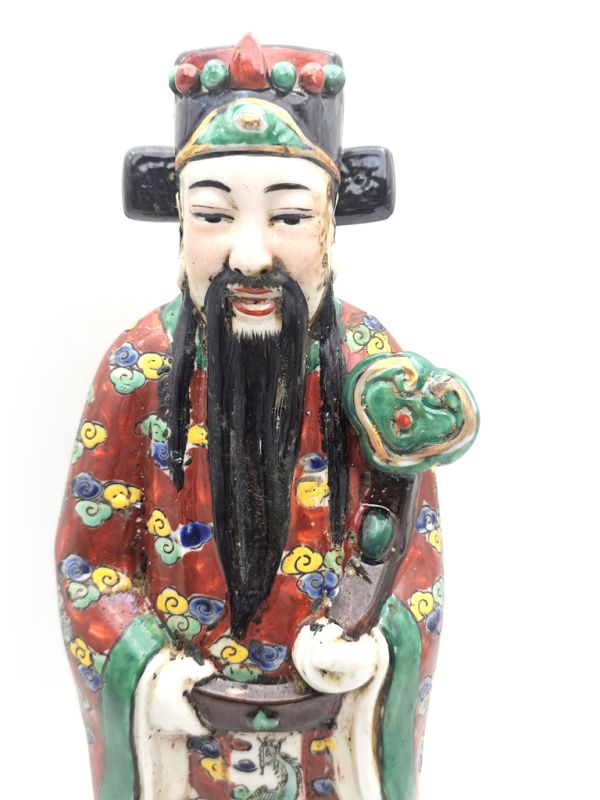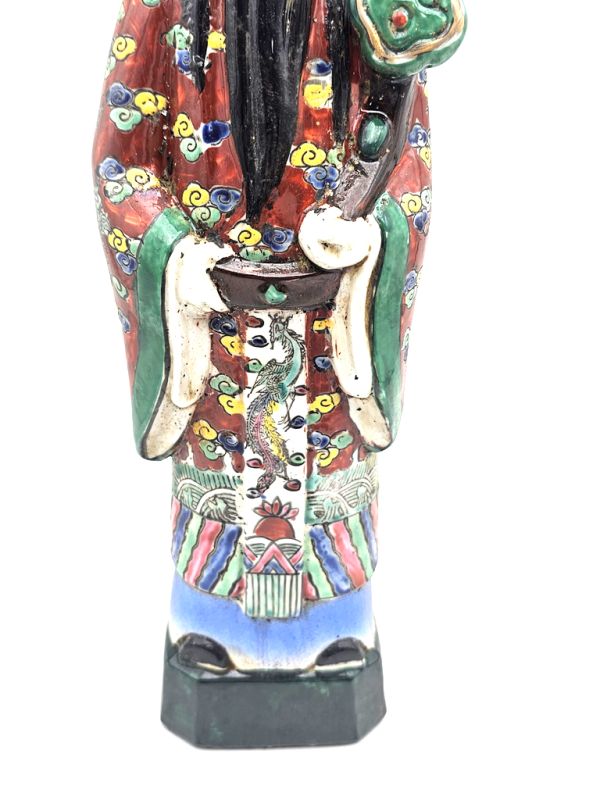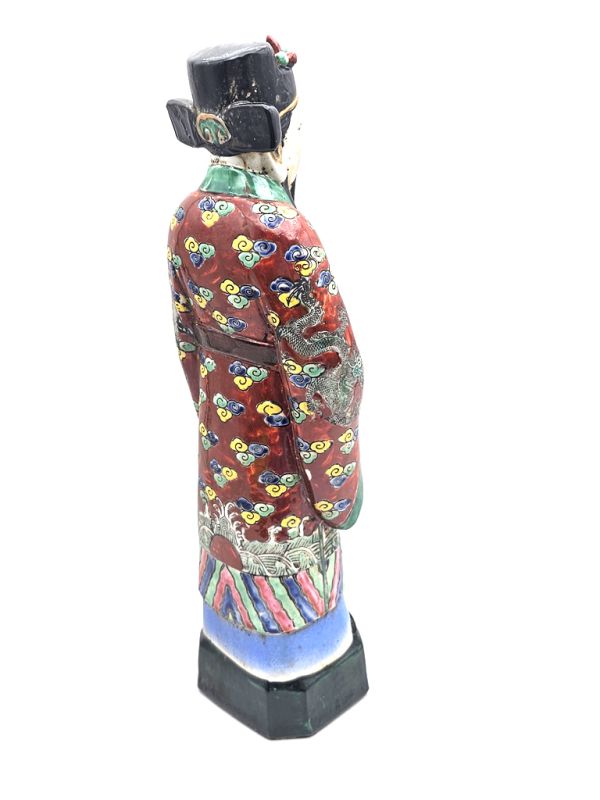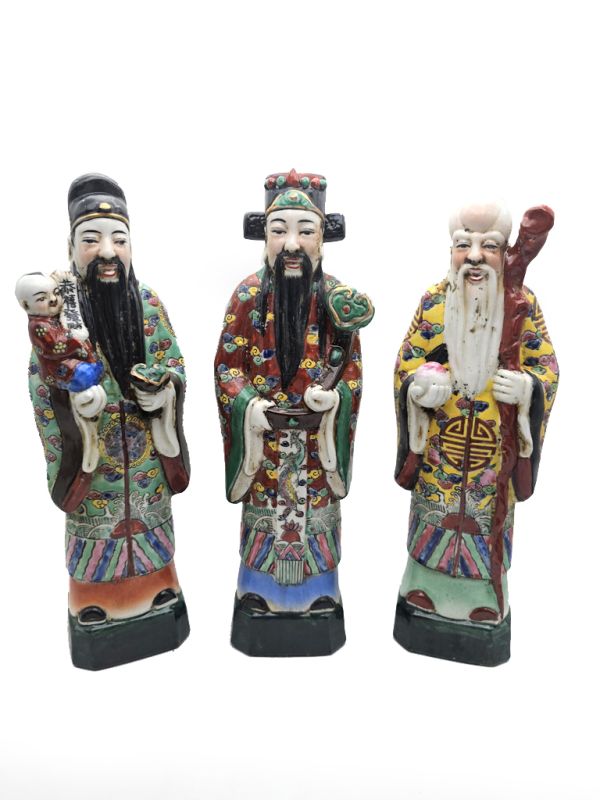Chinese Porcelain statue - The Three Stars of Happiness - God Fu Xing
Chinese Porcelain Statue - Qing Dynasty Reproduction:
- Discover our collection of Chinese porcelain statues, highlighting the grandeur and elegance of the emperors and empresses of the Qing dynasty. Each piece is meticulously crafted to capture the essence and splendor of this imperial era, bringing a touch of history and culture to your interior.
- This porcelain statue represents a Chinese mandarin/concubine, symbolizing the nobility and dignity of the high officials of the Qing imperial court.
- Qing "Blue and White" Porcelain: This statue is a faithful reproduction of the famous Qing "blue and white" porcelains, known for their delicate patterns and timeless elegance. Artisans use traditional techniques to create pieces that embody the beauty and finesse of the original porcelains. Some of our statues also feature colors. The artisans use the same method as for creating the blue and white statues.
- Like all Qing porcelains, there is a resemblance to Ming "blue and white" porcelains, but the replica is not perfectly faithful; the blue is less clear than the sapphire blue of the Ming.
A Completely Handcrafted Process
Selection of Materials: The first step is to select the highest quality porcelain. Artisans choose pure raw materials, rich in kaolin, to ensure a fine texture and characteristic translucency.
Preparation of the Paste: The raw porcelain is mixed with water and kneaded to obtain a homogeneous paste without air bubbles. This preparation is crucial to avoid cracks and defects during firing.
Creation of Molds: Plaster molds are made from original models. These molds are meticulously designed to capture all the details of the statue, from facial features to ornamental clothing patterns.
Porcelain Molding: The porcelain paste is poured into the molds. The molds are then turned and tilted to ensure an even distribution of the paste, forming a hollow shell. Once the desired shape is achieved, the excess paste is removed.
Drying and Pre-firing: The molded statues are left to air dry. This process can take several days, depending on the size and thickness of the piece. Slow and even drying is essential to avoid warping. Before decoration, the statues are pre-fired at low temperature to harden the porcelain. This pre-firing, or bisque firing, stabilizes the shape and prepares the surface for painting.
Painting and Decoration: The traditional "blue and white" patterns are painted by hand. Artisans use specially prepared pigments to achieve the distinctive blue color of Qing porcelains. Each pattern is applied with precision and care. After painting, a layer of clear glaze is applied to the statue. The glaze protects the painted patterns and gives the porcelain its brilliant shine and smooth surface.
High-Temperature Firing and Finishing: The glazed statue is fired at high temperature in a traditional kiln. This final firing, often called grand fire firing, fixes the colors and the glaze, making the porcelain durable and resistant. Once cooled, the statue is hand-polished to remove any imperfections and ensure a smooth, shiny finish. The details are checked and, if necessary, retouched to ensure impeccable quality. Each statue undergoes a rigorous quality control. Artisans inspect each piece to ensure it meets our collection's high standards, checking the precision of details, color purity, and structural integrity.
Each porcelain statue in our collection is the result of a complex and careful artisanal process. From material selection to final finishing, each step is carried out with a dedication to excellence and a deep respect for ancient traditions. By acquiring one of our statues, you obtain a unique work of art, rich in history and craftsmanship.
Mandarins in China:
"Mandarin" is a Western term referring to a high-ranking official, who is literate and educated. In China, for over 1300 years (between 600 and 1905), the high administration was held by the famous caste of mandarins. To access this high administration, mandarins had to pass numerous exams to obtain civil and military positions.
Mandarins and concubines occupied essential and complex roles in the imperial court. Mandarins, selected through rigorous exams based on Confucian classics, were the administrators and advisors to the emperor, embodying the values of righteousness and loyalty. Their influence extended to all aspects of governance, ensuring the state's efficiency and stability. Concubines, chosen for their beauty and education, played a crucial role as companions to the emperor and potential mothers of heirs. They often exerted subtle but significant influence on imperial decisions, navigating the court's intrigues and power dynamics. Together, these figures symbolized the balance between rigorous administration and cultural influence, contributing to the richness and complexity of imperial Chinese life.











